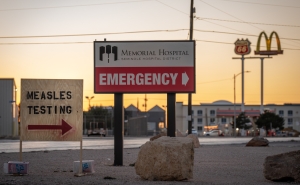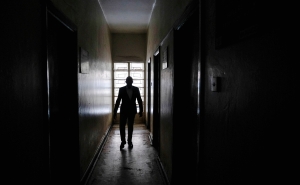
Interview by Joshua Sharfstein
In the early days of the pandemic, clinicians began to treat COVID-19 patients with the plasma of people who have recovered from COVID-19. The idea was that protective antibodies in the plasma would help prevent severe illness and death. Nearly two years later, more evidence is in and it's being hotly debated.
In this Q&A, adapted from the January 12 episode of Public Health On Call, Arturo Casadevall, MD, PhD, chair of Molecular Microbiology and Immunology, talks with Josh Sharfstein, MD, about the results of the COVID-19 Plasma Project and his take on divergent recommendations about using plasma as a therapy.
What is convalescent plasma?
People who recover from COVID-19 have antibodies in their blood; those patients can then donate plasma to other individuals for treatment of the disease.
Can you explain what high-titer plasma and low-titer plasma are?
“Titer” is a word for the number of antibodies a person may have. After recovering from COVID-19, someone might have a lot of antibodies, and others might have fewer antibodies. The best plasma comes from donors who have a lot of antibodies. We call that high-titer. You can figure out which plasma is high-titer by testing it in the lab.
The word ‘antibody’ brings to mind monoclonal antibodies, which have been widely used and proved to be effective for many patients. How does convalescent plasma compare to monoclonal antibodies?
Antibodies are proteins that are normally produced during infection. They can also be made in the laboratory, and [those are] known as monoclonal antibodies. Both plasma and monoclonal antibodies have the same active ingredient. Therefore, if one works, the other one should work, and that's something very important to discuss.
When the pandemic first started, there wasn’t a vaccine on the immediate horizon. What were your thoughts on proposing convalescent plasma therapy?
Antibody therapy in the form of convalescent plasma, also known as serum therapy, goes back 130 years. We have a lot of experience transferring antibodies to treat diseases. Whenever there is a pandemic or an epidemic, physicians often resort to it, because it’s available as soon as a person has recovered.
What is happening inside someone’s body who is getting antibody therapy, be it monoclonal antibody therapy or convalescent plasma?
If you haven't been immunized and you become infected with COVID-19, you’ll go through this initial viral phase where the virus replicates. The virus replicates in tissues in the nose, sometimes in the lungs. It takes around seven to 12 days for the immune system to begin making antibodies. For most people, the immune system will catch up and check the virus, allowing them to recover, but some don't. Those are the ones who then get massive inflammation and end up in the emergency room.
What can be done is to administer antibodies early in the process to neutralize the virus and stop the progression of the disease. This is the premise behind plasma and monoclonal antibodies to prevent hospitalization.
A lot of studies have been done on convalescent plasma. Some of them had positive results, and some of them had negative results. Can you characterize the data that's emerged?
To put everything in perspective, in the 130 years before COVID, we had one randomized control trial from plasma that was done in Argentina in the late 1970s. The reason there’s only one is that they’re very hard to do in the middle of a pandemic. But in the last two years, we have completed about 25. So we have a lot of very high-quality data. What I can say to you is that antibody therapies are most effective if used early, and with sufficient antibodies.
If you take all these 20-plus trials and put them in a row, you’ll see the patients that were treated late show no efficacy.
Why would it be that this treatment would work earlier but not later when people are really sick?
Late in the disease process, people already have their own antibodies. So, giving them an antibody on top of something that they already have might only benefit them a little.
What is causing deaths when it comes to COVID is inflammation. Inflammation in the lungs prevents gas exchange, and you cannot expect the antibody to reverse inflammation. All you can expect is the antibody to neutralize the virus. If you can neutralize the virus, you prevent further inflammation. The earlier you treat, the more likely you are to affect the process.
The National Institutes of Health did a study in 2020 and 2021 called the C3PO study and concluded that early use of convalescent plasma didn't work.
We had great hopes for the C3PO study when it was first designed. The word early here is relative, because the people involved in this study are already sick enough to be walking into the emergency room. This study involved patients in the ER with COVID to randomly receive convalescent plasma or an infusion with some sort of vitamin water. If you follow the rules of the study, you don't see a difference. Those who got plasma and those who got vitamin water ended up roughly about the same. But the study was designed so that people who showed up on that index visit [first visit to the ER] only counted if they got admitted.
If you're sick enough to go to the emergency room and get admitted, I don't think you can expect plasma to work right away. So, if you look at the same data and remove those patients who were admitted on the index visit, C3PO has an efficacy of over 30%. That is, those who were discharged home were less likely to come back if they received plasma. It makes sense: The ones who were discharged were probably less sick than the ones who got admitted.
In a way, your critique of that study is that they included in their primary analysis people who were actually pretty sick.
Exactly. We have posted a critique of that study on our website. Those who are interested can go and look at it. Those of us in the field are considering this a positive study, while the NIH is considering a negative study.
I'm sure you're aware that the World Health Organization looked at this question of early use of convalescent plasma and decided not to recommend it on the basis of all the studies that were done in early December. That was a big moment in this field. Why did they decide that? And how did you respond?
We were very disappointed with the WHO’s position and we don't agree with it. They took all the randomized controlled trials and did a meta-analysis. Basically, they concluded that there wasn't a lot of efficacy. Some of these randomized controlled trials were huge. If you do a meta-analysis, a huge trial that is negative totally wipes out the effect of the other trials that are positive.
Would it be fair to say that some of those studies may not have used the high-titer plasma?
Absolutely. Some of these studies used plasma very late; other studies used insufficient plasma. The WHO did not have access to the Hopkins data. We are hopeful that since they are physician-scientists and rigorous people, they will issue new recommendations in the future.
Public Health On Call
This Q& A adapted from the January 12 episode of Public Health On Call Podcast.
Let's talk about the most recent study that you were involved with. Tell us about that project.
In those very dark days (March-April 2020), a lot of people throughout the world set up randomized clinical trials for plasma, which is exactly what was important to do. Unfortunately, the great majority of them were set up in hospitalized patients. Hospitalized patients by definition are quite sick; otherwise, you wouldn't admit them.
Hopkins experts David Sullivan, Shmuel Shoham, Kelly Gebo, and others, set out to do a very different type of clinical trial involving outpatients, which is very hard to do. Think about the logistics. You have to bring somebody who's infected to someplace where you're now going to give them a unit of plasma. There weren’t facilities for that. They had to set up tents outside of the hospital, and they set up a multi-center trial in many other parts of the United States.
It was the one trial that was tested in the conditions when it's actually supposed to work, which is early in the course of the disease. This trial took a while. It had its ups and downs—at times there weren’t sufficient patients, then came the vaccines—but they were able to complete it by late October.
It was a double-blind trial involving around 1,100 people. Some patients received COVID-19 convalescent plasma, and others received regular plasma. Those who received convalescent plasma as an outpatient had a 54% reduced likelihood of being hospitalized.
The data are even better if you look at it as a function of time—that is, if you got [convalescent plasma] in the first three to five days of symptoms. That is exactly what we would expect and is consistent with the monoclonal antibodies, which by the way were tested by the pharmaceutical industry in the most optimal conditions possible, which was [within] three to five days of symptoms.
We've heard that some monoclonal antibodies don't work for omicron, and the ones that do work are in short supply. Has the FDA considered authorizing convalescent plasma for early in the disease?
Within days of the Hopkins results being made public, the FDA moved to open plasma into the outpatient space [authorized its use]. This is huge because it means that you can use plasma in the best conditions possible, early in the course of the disease.
Another bit of good news is that we don't need omicron convalescent plasma. It turns out that people who had COVID and were subsequently vaccinated have such high titers of antibodies that their plasma neutralizes the omicron variant. We are now in a great position: We know how to use plasma, the FDA has opened the outpatient space, and we have a lot of donors who can give. We lost two or three monoclonal antibody therapies [because they’re not effective for treating infection from omicron], and this provides a mechanism to hopefully help people from progressing to disease so they don't have to be hospitalized.
Why don’t those monoclonals work for omicron?
Whether you get vaccinated or get convalescent plasma, you have thousands of different antibodies. When you get monoclonals, you're getting one or two—lots of it—but it's very easy for the virus to defeat it. In fact, the SARS-CoV-2 variants already defeated several of them. We anticipate that new ones will be made, but they will always be vulnerable to viral changes, whereas plasma is the only therapy that keeps up with variants.
You’ve been involved in this experience for almost two years. How has it shaped your view of science and its advances?
In some ways, it's made me very optimistic about what we can do. Things can be done very rapidly, and we can generate very high-quality data very quickly.
On the other hand, it’s clear to me that we have a tremendous amount of work to do in medicine on teaching physicians how to critically think about data—including, by the way, the recommendation committees. I'm very interested in the problems of science and how scientists are trained. I think there have to be comparable efforts to get physicians to think critically about data, especially in a pandemic, where the information is changing by the day.
Joshua Sharfstein, MD, is the vice dean for Public Health Practice and Community Engagement and a professor in Health Policy and Management at the Johns Hopkins Bloomberg School of Public Health. He is also the director of the Bloomberg American Health Initiative and a host of the Public Health On Call podcast.





